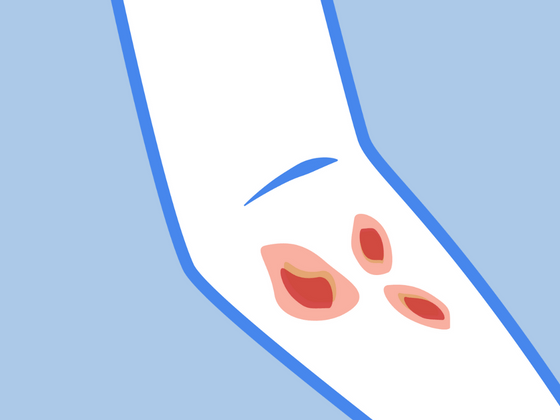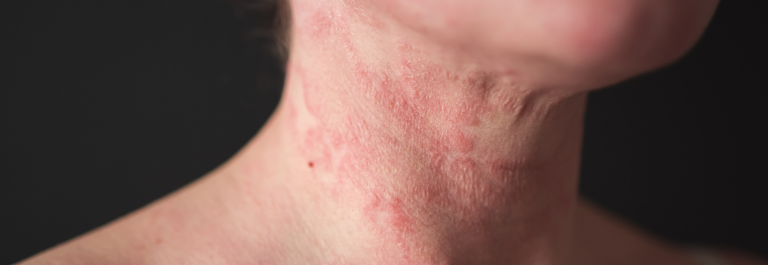Eczema (atopic dermatitis) is a chronic skin condition that impacts 1 in 10* individuals worldwide, including 31 million Americans*.
But did you know this itchy skin condition also impacts up to 12% of cats* too, taking a toll on our beloved pets and companions?
If you've noticed your furry friend incessantly scratching, grooming, or getting more restless than usual, they might be coping with a type of feline allergic skin disease. If this sounds familiar, however, don't fret!
Throughout this blog, we'll cover everything you need to know about:
-
The main types of cat skin allergies
-
What causes feline atopic dermatitis
-
How to improve skin health for your kitty
Read on to learn more about what might be causing your cat's sensitive skin and how to support them back to their healthiest, happiest ways.
Types of Contact Dermatitis in Cats
Contact dermatitis refers to a set of common skin allergies and irritations typically caused by direct contact with environmental allergens.
In humans, contact dermatitis is often triggered by harsh chemicals found within your skincare and home cleaning products, food ingredients, or environmental factors such as mold or pollen.
Some of the most common types of contact dermatitis in cats include:
Flea Allergy Dermatitis
Flea allergy dermatitis (FAD) is a common form of contact dermatitis caused as part of an allergic response to flea bites, and in particular, flea saliva.
For some cats, when flea saliva breaks past their skin's protective barrier, their immune system launches a hypersensitivity response, flooding the bloodstream with defensive chemicals.
It is these chemicals which then cause skin inflammation, irritation, and an allergic reaction.
Miliary Dermatitis
Miliary dermatitis is an allergic skin disease that affects cats. It is characterized by small, crusted lesions that tend to be felt rather than seen across your cat's skin.
Most typically, miliary dermatitis will affect the lower spine, around the base of the tail, face, ears, neck, flanks, and belly.
Similarly to flea allergy dermatitis, miliary dermatitis tends to be caused by flea bites. However, it may also be triggered by dust mites, lice, nutritional deficiencies, and infectious and immune-mediated diseases.
Food Allergies
Just as with humans, feline allergic dermatitis may also be triggered in response to certain food ingredients that they're consuming.
For example, in rare circumstances, cats may have a food allergy to beef, chicken, fish, or dairy.
Other Skin Infections
Beyond allergies too, other skin irritations in cats may be caused by a broad range of triggers, such as stress as well as further skin infections.
Head and Neck Pruritus
In cats, head and neck pruritus (HNP) is a skin condition characterized by patches of pruritus (otherwise known as itchy skin) located on the head and neck combined with sore lesions.
Typically, these lesions tend to be caused by self-trauma through over-scratching or excessive grooming. For some cats, this behavior may be linked to psychological stress and can lead to alopecia.
Secondary Skin Infections
Particularly if your cat has self-inflicted skin lesions as a result of excessive scratching, they may be at risk of developing secondary skin infections such as bacterial infections and fungal infections.
This is especially the case if your cat is an outdoor cat and may run into bacteria and germs on their adventures.
Symptoms
If you suspect that your kitty may have skin allergies or cat dermatitis, some of the most common clinical signs and allergic symptoms to look out for include:
-
Dry, itchy skin which may be flaky and rough to the touch
-
Intense itching, which may manifest in frequent scratching
-
Excessive licking and grooming
-
Hair loss
-
Skin ulcers, open sores, and scabs
-
Skin irritation, redness, inflammation, or hypersensitivity
-
Streaming or clogged eyes
-
Runny nose
-
Gastrointestinal problems
Treating Feline Atopic Dermatitis
If you're worried about your cat's affected skin, first and foremost, we'd recommend you consult their veterinarian for support in putting together a comprehensive treatment plan.
Treatment solutions may include:
Topical Treatment Options
Treating atopic dermatitis in cats may involve a combination of different approaches, such as your vet prescribing medications such as steroids.
Natural Alternatives
If you're looking for a more natural alternative, applying aloe vera straight from the plant may also help to soothe any hot, itchy skin patches.
This unscented Natural Pet Shampoo Bar for cats and dogs has a natural base of nourishing organic oils and coconut milk to soothe the skin.
Avoiding Allergies
Another treatment route centers around avoiding critical allergies that trigger your cat's sensitive skin. Toto do this, you may need to ask your vet to complete an allergy test to narrow down the root cause.
Allergen Specific Immunotherapy is a long-term treatment that works by administering gradually increasing quantities of an allergen extract to your cat's skin to help de-sensitize them.
Treating your cat and home regularly for fleas will also help to reduce the risk of triggering a flea allergy.
Dietary Changes
To determine your cat's food sensitivities, consider trying an elimination diet. You can try home cooking for your pet to more easily spot which kinds of proteins or grains are causing issues.
That being said, however, changing your furry friend's food can cause issues with skin, indigestion, and even vomiting, so be sure to consult your vet first.
Try a veterinarian-created supplement such as this Homemade Cat Food Supplement.
Soothe Your Cats Atopic Dermatitis Today
Follow these tips to get to the bottom of what might be causing your cat's skin allergy today, helping you identify the best way forward to improve their skin health and boost their overall quality of life.
Sources
*https://my.clevelandclinic.org/health/diseases/9998-eczema
*https://nationaleczema.org/research/eczema-facts/
*Ravens PA, Xu BJ, Vogelnest LJ. Feline atopic dermatitis: A retrospective study of 45 cases (2001–2012) Vet Dermatol. 2014;25:95–102.








